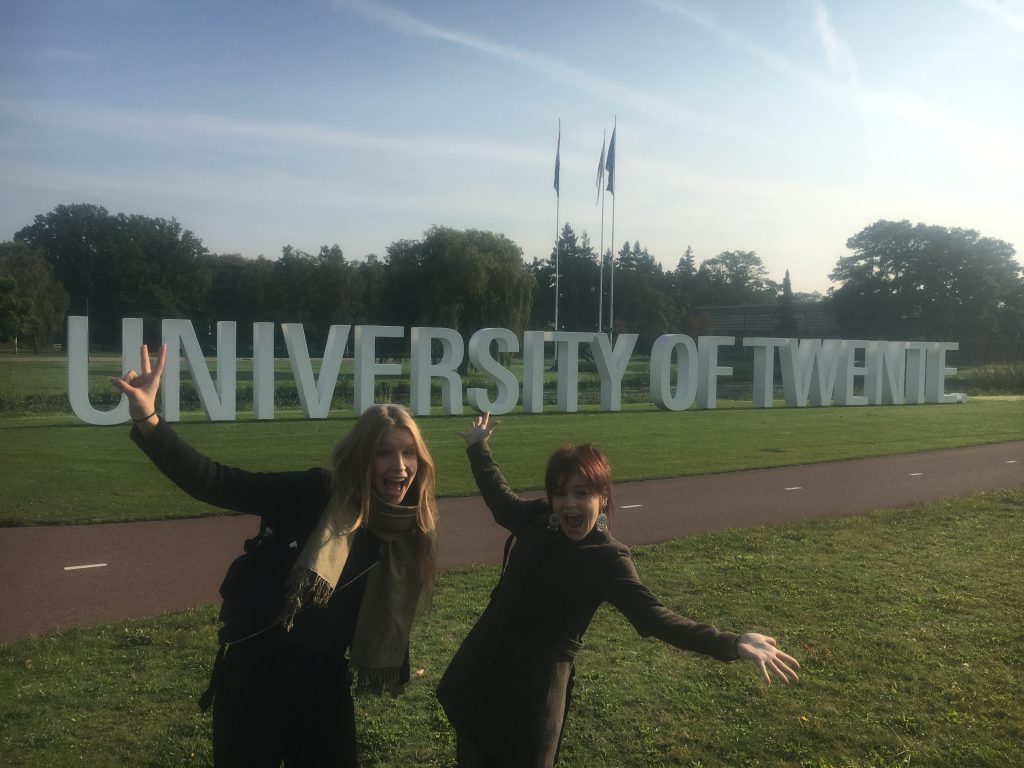
Janina and Agnetha excited for the symposium
During our first sprint we took a part of one day symposium titled “Wearables in Practice: Physiology and Emotions 4TU”, held at the University of Twente in Enschede. We got a lot of new insights from the experts working in a field of sensor technology and individual health.
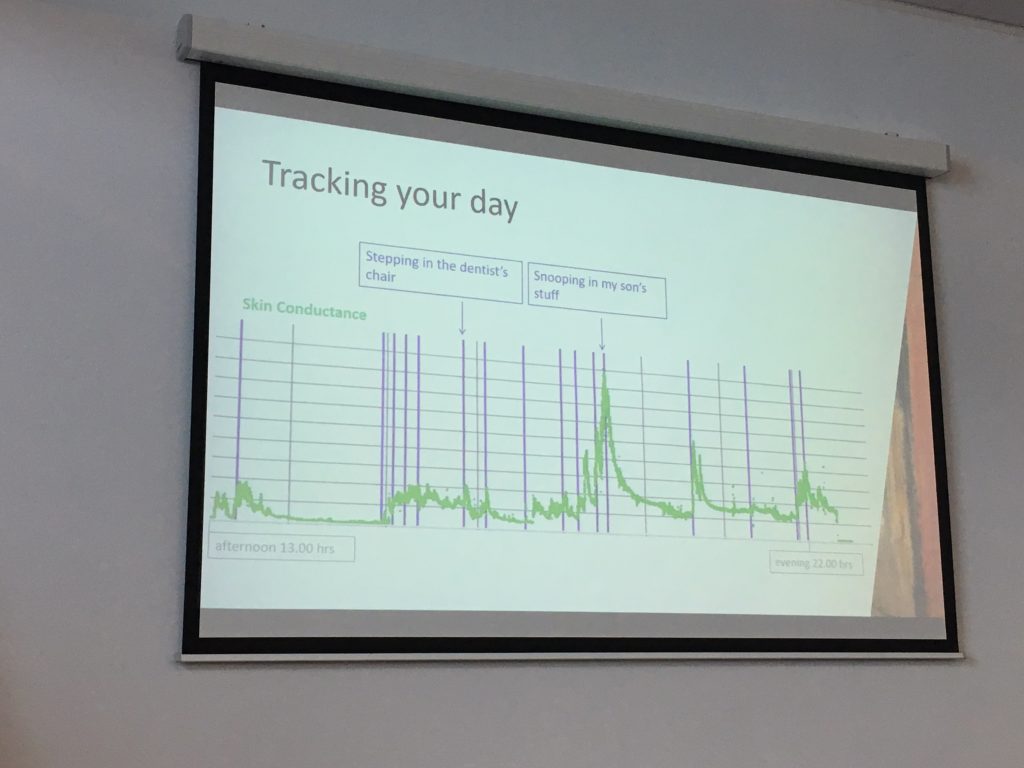
Joyce Westerinks self-tracking with skin conductivity sensor in combination with taking notes throughout her day
Joyce Westerink, a former physicist, has been focusing on wearable well-being in her research. She confirmed that skin conductivity is a reliable sensor to measure arousal levels, although the delay can vary from 6 to 10 seconds. In her study about stress levels in teachers, she also visualized the data so that the teachers could also interpret their stress levels by themselves. Westerink gave a brief insight into the psychophysiology in communication and the intimacy of heart beats. In her experiment – setting two individuals to different sides of the room, and then asking them to walk towards each other – she found out that hearing the personal heartbeat make the subjects to stop approaching each other more quickly. As she suggests, hearing a personal heartbeat is creating intimacy between the subjects. She strongly believes that this feature could also be used to improve our relationships with each other. Westerink argued that heart rate as a connection is more accepted among the users than the heart rate as an information. For our next sprints we will keep in mind the possibility to offer the subject the visualization of his/her emotional data.
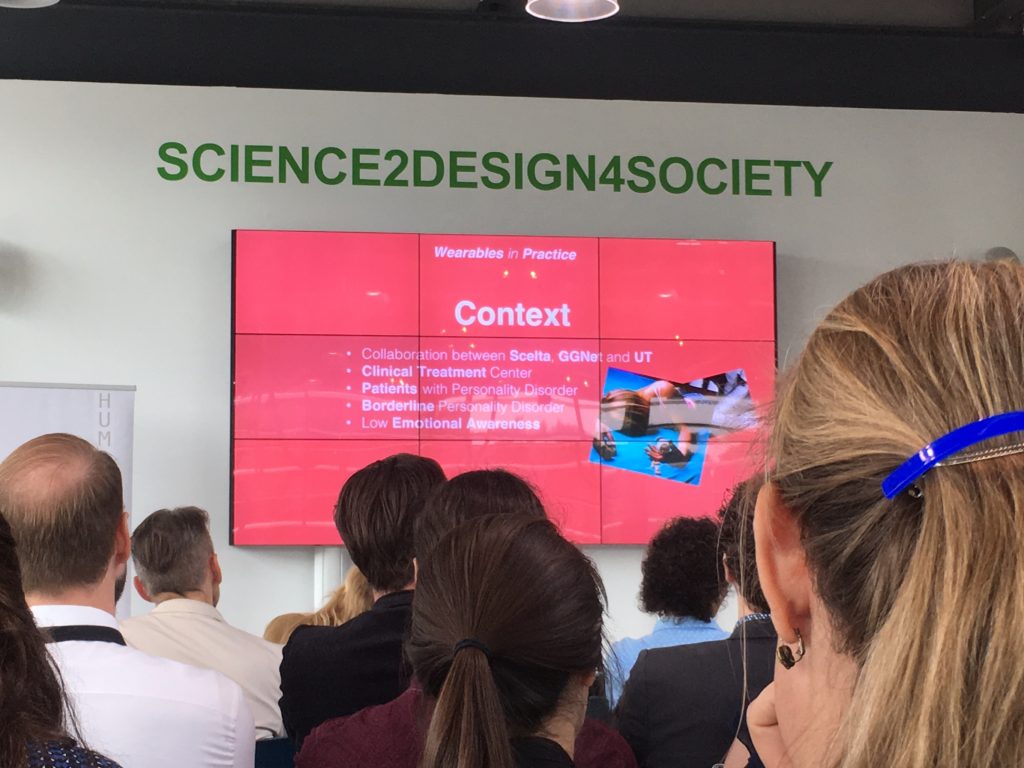
One research looking how to track emotions on people with Borderline Personality Disorder using self-evaluation app in combination with heart-beat tracking wristbands
The emphasis of the symposium was put onto an individual. Almost every speaker highlighted the self-regulation and -reflection of the wearables, as well as individual interpretation of one’s own physiological data. For example, Matthijs Noordzij stated that the smartwatch technology can be used as a means of warning, informing and/or educating people. However, in order to implement the smartwatch technology to our everyday life, it is necessary to design predictive models with the help of sensors. As Noordzij highlighted, we should invent a new approach to deal with the data by focusing more on design research.
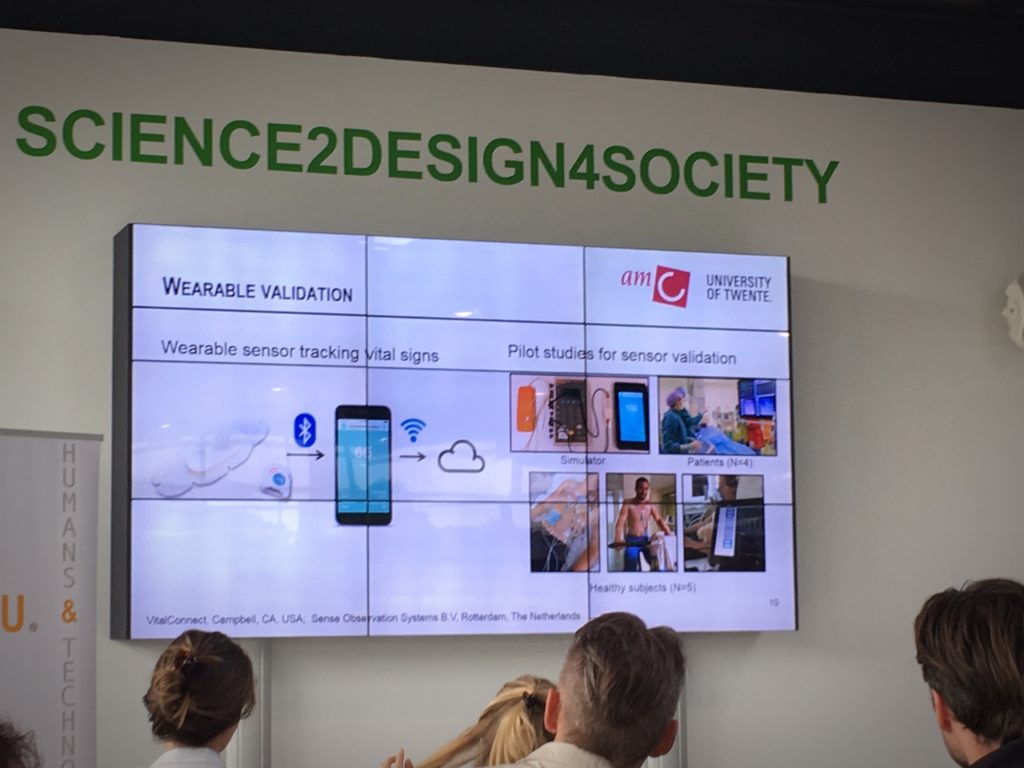
One pilot study on wearable sensor tracking through vital signs.
During the symposium, we also participated in a workshop to test out the effects of “surprise” or “excitement”. One participant in each team would wear a wristband that would track your heartbeat, and the data would be connected to an external app you can use on your smartphone. All data from your day would be stored there, and the wristband would make a sound that your pulse was increasing, and you can then go to the app and add some notes about what happened in that moment. The participants in this experiment would have to sit on a balloon, and the excitement of sitting on the balloon, and the may/may not effect of the balloon exploding would increase the heartbeat in the participants. Some balloons did indeed explode and we could clearly see changes in the pulse on the app. It was some delay though from actual “shock” and until the sensor would detect it and give feedback back to the user. Thus making it a bit uncertain to what actually triggered this emotion. We were asked to give our inputs about the product and give our thoughts on how to improve it. This use of technology to track emotions were definitely interesting for our project, and for our next sprint we will try to push forward and test out some of the ideas.
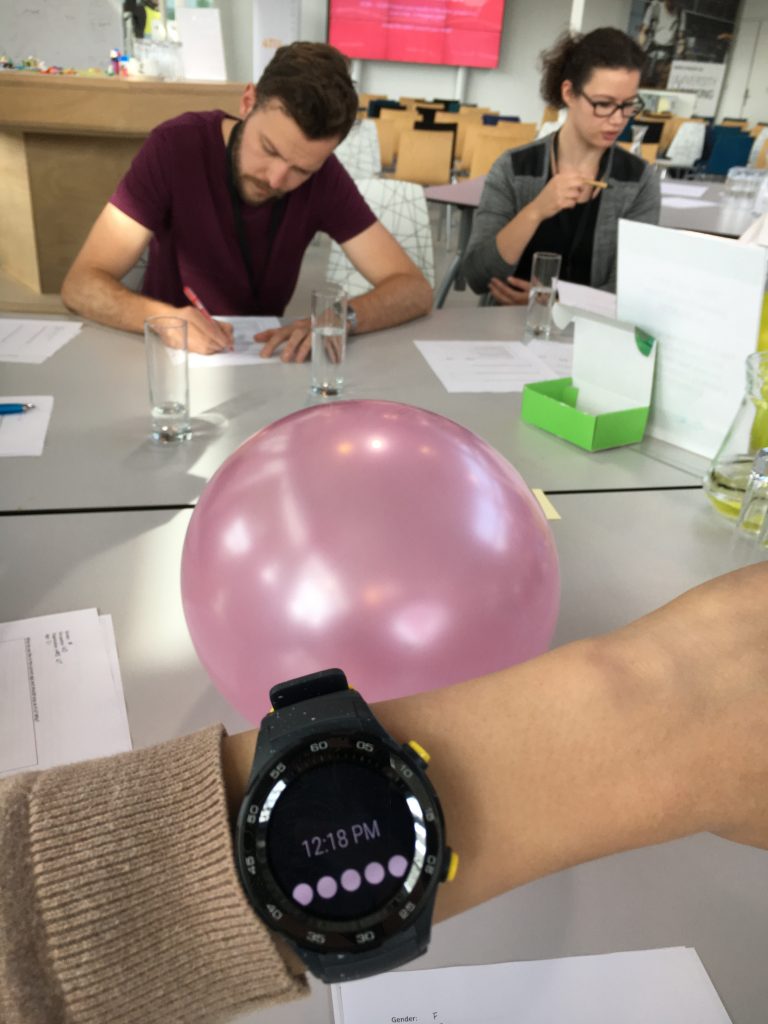
Workshop session with heartbeat sensor, smartphones and ballooons
The participants in this experiment would have to sit on a balloon, and the excitement of sitting on the balloon, and the may/may not-effect (anticipation) of the balloon exploding would increase the heartbeat (arousal level) in the participants. Some balloons did indeed explode and we could clearly see changes in the pulse on the app. It was some delay though from actual “shock” and until the sensor would detect it and give feedback back to the user. Thus making it a bit uncertain to what actually triggered this emotion. We were asked to give our inputs about the product and give our thoughts on how to improve it. This use of technology to track emotions were definitely interesting for our project, and for our next sprint we will try to push forward and test out some of the ideas.
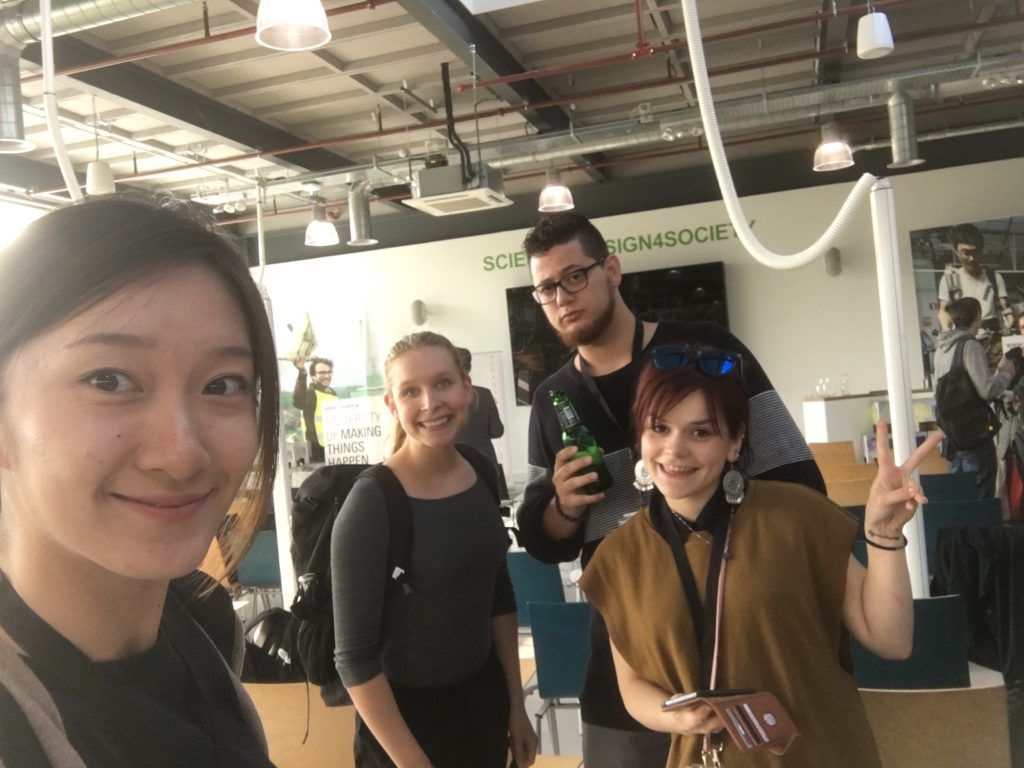
The team keeping a happy mood after a long day in Enschede 🙂
The symposium gave us a lot of insights into current findings in the field of wearable technologies and how we can implement such technologies in our own final products. We talked to quite a few researcher with their experience and knowledge in the field, and we were highly impressed with their research so far. With all this in mind we are excited to start the next sprint with new knowledge and broader insights. We did get feedback on our ideas from people and people seemed to agree that the problem we are attacking is something that could be very useful in many different fields, and we hope we can come up with a great solution to tackle this problem!


